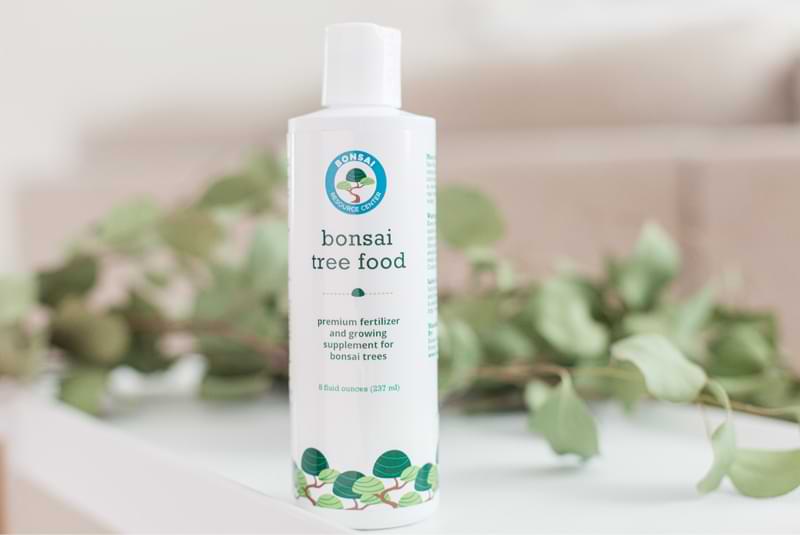Rosemary may not be the first plant that comes to mind when you think of bonsai, but this popular herb actually has many characteristics that make it great for bonsai. This hardy plant already does well when grown in containers and can withstand frequent pruning.
Rosemary has a lovely appearance as an evergreen with needle foliage, produces beautiful flowers in the spring, and makes a beautiful addition to any bonsai collection.
Rosemary Bonsai Care Guidelines
For the most part, rosemary is easy to care for, which makes it a good choice for bonsai. It can thrive with minimal fuss, but there are a few things to be aware of when caring for rosemary bonsai.
Position
Rosemary bonsai does best when positioned to get at least six hours of full sun outdoors. However, a mature established rosemary plant can handle a location with more shade if needed.
When positioned indoors, rosemary prefers 12 hours of direct sun, so you’ll likely need to supplement with artificial light if you bring your rosemary bonsai inside. Rosemary also needs good air circulation, so consider setting up a fan nearby if needed.
Summer
Plan to keep your rosemary bonsai outdoors during the summer if possible. Rosemary likes warm temperatures and full sun, so summers outdoors will help keep your rosemary healthy and growing.
Winter
Depending on your climate, you may need to bring your bonsai indoors during the winter. Rosemary officinalis is native to the Mediterranean, and it can overwinter outdoors in warmer climates.
In my climate, rosemary has a 50/50 chance of surviving when left outside during the winter depending on how severe the season is. Since rosemary is inexpensive and easy to buy, that’s not a concern for regular plants, but you don’t want to risk losing a rosemary bonsai after investing time into care and styling.
Temperature & Humidity
Rosemary prefers temperatures between 55-80 degrees Fahrenheit, but it can handle hotter temperatures as well. Rosemary typically does not do well when temperatures drop below 30. While the plant can survive some winter weather below 30 degrees, it doesn’t always rebound. It’s better to bring rosemary bonsai indoors when temperatures drop below freezing.
Watering
Rosemary bonsai does not enjoy being oversaturated with water. Overwatering can be a big issue, especially when rosemary is brought indoors for the winter. Make sure the top couple inches of soil dry out before watering again. The rosemary’s container must have good drainage so that excess water can escape.
Once a rosemary bonsai becomes established, it can handle a little bit of underwatering, so give your rosemary a little extra time to dry out occasionally. This can help prevent root rot and other issues related to overwatering.
When brought indoors, rosemary bonsai needs moderate humidity levels. Most households won’t need to make any changes to keep rosemary happy. Just make sure there’s good air circulation around your rosemary bonsai if your home’s humidity level is on the higher end.

Fertilizing
Rosemary is a hardy plant, and it doesn’t require the same level of fertilization that many plants need when grown in containers. Plan to fertilize mainly in the spring when rosemary has the most new growth.
Use a gentle, balanced fertilizer when you water rosemary bonsai during the spring. Liquid fertilizers are generally the easiest to use; follow the instructions on the label for use, and avoid overfertilizing your rosemary bonsai.
Pruning and Wiring
Rosemary can be shaped into almost any bonsai style. Rosemary can handle a lot of pruning, and you can use anything you prune as an herb. Just make sure you don’t cut bare wood.
Wiring can be a little trickier than pruning. You can only wire new growth on rosemary. As rosemary grows, the older branches become brittle and thick, so older branches don’t respond well to wiring.
Rosemary is hardy and easy to work with, which makes it a good bonsai choice for those new to bonsai pruning and wiring. Mistakes are not as drastic on rosemary as they are on other bonsai tree species.
Pruning the Roots of Rosemary Bonsai
You’ll need to trim your rosemary bonsai’s roots each time you repot. Use sterilized scissors to cut away a couple inches from the bottom and the sides of the root ball. Be sure not to cut more than one-third of the roots.
As you prune the roots, check for signs of damaged roots, and remove any you find. If you notice many roots are dark or slimy, this is a sign of overwatering.
Repotting
Rosemary is a fast grower and usually needs to be repotted once a year. Sometimes you’ll be able to reuse the same container after trimming the roots, but other times you’ll need to pot up to a larger container.
Plan to repot in the spring right before your rosemary bonsai’s growth takes off. Use fresh soil each time you repot. Rosemary does best in well-draining, somewhat acidic soil. Regular potting soil can hold on to a little too much water, so mix in perlite or other material to aid with drainage before placing rosemary in regular potting soil.
How to Bonsai a Rosemary Plant
Since rosemary is so easy to obtain and grows quickly, it is one of the least intimidating plants to try to bonsai. Just know that rosemary bonsai will still take several years to develop into a good bonsai shape.
We’ll just discuss how to bonsai a rosemary that has already started, but starting rosemary from seed doesn’t take significantly longer. If you want to start rosemary from seed instead, just plan to start rosemary around three months before your last frost date. The seedlings should be about 3 inches high when it’s time to bring them outdoors.
Rosemary seedlings are fairly inexpensive to purchase, though, and you can find them everywhere from local garden centers to big-box stores and even some grocery stores.
Here’s how to get started.
Required Materials
- Healthy rosemary seedling
- Commercial potting soil
- Perlite
- Clay pot
- Pruning shears or scissors
- Aluminum or copper wire
How to Bonsai a Rosemary Tree Step by Step
- Prepare a healthy rosemary seedling. Even though rosemary grows quickly, you won’t be able to begin shaping it into a bonsai right away. It typically takes a couple years of growth for the rosemary to become mature enough to bonsai. To keep your rosemary healthy until it reaches this stage, choose a good potting soil and appropriate container for your seedling as it grows.
Use a mix of two-thirds commercial potting soil and one-third perlite to create a good growing medium for your rosemary. Use a clay pot as the container, as clay will allow for good air circulation, keeping your rosemary’s roots healthy as it grows.
After two or three years of growth, your rosemary will be ready to begin the bonsai process.
- Trim your rosemary’s roots. Start by removing about one-fourth of your rosemary’s roots on all sides of the root ball. Make sure to use sterilized tools as you trim. This is also a good time to inspect your rosemary’s roots to make sure it’s healthy before you start to shape it.
Repot your rosemary after trimming its roots, and be sure to water afterwards.
- Begin shaping your rosemary bonsai. Begin by deciding the style you want for your rosemary bonsai. Then begin to prune away any dead branches. Once this is taken care of, prune up to 20 percent of the rosemary, keeping the style you’ve selected in mind.
Once you’ve finished pruning, use wire to train the remaining rosemary branches, wrap the wire beginning at the trunk and moving out. You may need to leave the wiring in place for several months as the branches develop. If the branches are larger in diameter than a pencil, they are likely too mature and woody to respond to wire training.
- Care for your rosemary bonsai. Continue to provide good care for your rosemary. Give it proper access to water and sunlight as it grows. Continue pruning and wiring as needed. Even though rosemary is an evergreen, most of its growth takes place during the spring and summer, so this is generally when training and styling is most effective.
How to Propagate Rosemary Bonsai
If you want to propagate your rosemary bonsai to create new rosemary plants, you’re in luck because the process is easy.
Wait until the end of the summer, then use sterilized scissors or pruning shears to remove 4-6 inch cuttings from healthy branches. Remove all leaves from the cutting except the top three or four leaves. Then dip each cut end into rooting hormone. (The rosemary will still take root if you decide not to use rooting hormone, but the process is more likely to be successful if you use rooting hormone.
Place the cutting into a small container filled with fresh potting mix. Push the cutting in until the soil reaches the bottom leaves on the cutting. Water thoroughly and allow excess water to drain away. Place a plastic bag over the pot to create a mini-greenhouse. Put the cutting in a location where it receives light, but avoid direct sunlight. Water whenever the soil seems to be almost dry. Don’t let the soil dry out completely.
After about 3 to 6 weeks, roots will begin to develop. If you gently tug on the cutting, you’ll know that roots are developing if you feel a slight resistance. When this happens, remove the plastic bag and place the cutting in a sunny location.
Transplant your rosemary to a larger container when it outgrows its first container. Propagating is an easy, inexpensive way to grow more rosemary plants for yourself or to share with your friends.
Common Pests and Diseases
We’ve mentioned several times that rosemary is a hardy plant, but that doesn’t mean it isn’t sometimes bothered by pests and disease. The most common issue that arises with rosemary is powdery mildew, which is usually caused by high humidity when rosemary is kept indoors during the winter. To prevent the problem, make sure there’s good air circulation around your rosemary bonsai when it’s indoors.
Rosemary can also fall prey to pests including aphids and spider mites. First, spray water on your rosemary bonsai to knock the pests away. Sometimes this is all you need to do to solve the problem. If that doesn’t work, spray a water-and-soap mixture on the leaves to get rid of pests.
How to Care for Rosemary Bonsai FAQ
FAQ: What herbs make good bonsai?
Besides rosemary, the easiest herb to bonsai is thyme. Other good options include lavender, scented geraniums, and oregano. If an herb is woody and grows upright, you may be able to bonsai it.
FAQ: What is the life span of a rosemary plant?
On average, rosemary tends to live for at least 10 years. Some rosemary can live up to 20 years. It depends on the type of rosemary and the care the plant receives.
FAQ: Can a rosemary plant live indoors?
Normally, rosemary is kept outdoors for at least part of the year. Since rosemary needs a good amount of direct sunlight, it will need supplemental light if kept indoors year-round. It’s possible to have rosemary survive indoors, but be prepared to give it more attention than it would need outdoors.
FAQ: Why does my rosemary keep dying?
The two most common reasons rosemary plants die is lack of light and overwatering. If you keep your rosemary plant indoors, these two issues are more likely to occur.
Rosemary Bonsai Final Thoughts
Rosemary is an excellent plant for bonsai. It’s not too difficult for beginners to take care of, and it needs less fussing over than some other popular bonsai tree species. Rosemary has a beautiful appearance and lovely fragrance. As an added bonus, any branches pruned can be used in cooking or for other practical purposes.
Rosemary bonsai is a great bonsai for beginners or for more experienced bonsai enthusiasts looking to expand their bonsai collections.
Bonsai With Us!
The Bonsai Resource Center is here to help you learn about all things bonsai and provide you with the tools you need to keep your plant healthy and strong. Explore our other articles, visit our online shop, and connect with other bonsai lovers in our Facebook group to learn everything you need to know about this rewarding hobby!



